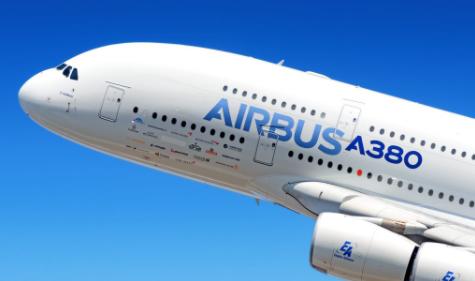The Additive Manufacturing Alliance, which includes Airbus, the Safran Landing System and the National Manufacturing Institute of Scotland (NMIS), has begun developing a new hybrid directed energy deposition (DED) 3D printing process for the aerospace sector.
The "Hybrid Direct Energy Deposition Sprint" project ultimately aims to provide a more sustainable path to aerospace parts production through 3D printing. To overcome the current challenges faced by traditional manufacturing companies, the new hybrid DED process will reportedly address many of the issues associated with manufacturing costs and lead times. The joint project, funded by the Institute of Aerospace Technology (ATI) and supported by high-value manufacturing catapults, also includes Cranfield University, the Northern Ireland Technology Centre (NITC) and an industry steering group of 13 companies.

△ Airbus A380. Photo from Airbus.
Stephen Fitzpatrick, Head of Additive Manufacturing and Processing at NMIS, said: "The project has real potential to provide aerospace companies with a more efficient alternative manufacturing route and will enable key industry drivers such as reduced emissions, remanufacturing and a more resilient supply chain. “
Advantages of hybrid DED 3D printing
Critical aerospace parts, including those that make up aircraft landing gear, have traditionally been produced through forging and machining. While forging methods currently seem to produce more reliable parts, the costs and lead times associated with traditional manufacturing mean there is room for improvement.
The new hybrid DED technology promises to streamline this manufacturing workflow, with users being able to 3D print metal features directly onto forged and molded parts. It combines the low cost of forging with the high yield of molding, reducing material waste and improving the ability to produce complex geometries. The process will also incorporate elements of parallel kinematics machine (PKM) technology, integrating robotic arms for added flexibility.
In addition to critical component manufacturing, the hybrid DED approach will open up a new path to component repair and remanufacturing. In addition, although it is currently used in the aerospace sector, it is also suitable for industries such as oil and gas, defense and automotive. Dr. Misael Pimentel, Manufacturing Engineer at NMIS, added: "The combined use of additive manufacturing with forging and PKM technologies has revolutionized the manufacturing industry, offering the potential to reduce lead times, production costs and material waste, while supporting the achievement of net zero targets and creating production models that truly contribute to the circular economy. “
△ Hybrid DED 3D printing process will be used to produce key components such as landing gear parts. Photo from Airbus.
NMIS and Cranfield University have already begun leading the first two phases of the project, which will provide demonstrator components later this year. The third phase, led by NITC, will focus on integrated PKM machining. The final proof-of-concept phase will compare traditional and alternative manufacturing routes. The company steering group also works closely with NMIS, Cranfield University and NITC to ensure project deliverables meet industry requirements and reduce risks for future steps such as parts qualification and certification.
Through projects like the Hybrid DED Sprint, additive manufacturing is becoming increasingly suitable for aircraft parts production. Last month, Russia's state-owned industrial technology group Rostec received a license from Russia's Ministry of Industry and Trade to continuously 3D print aerospace parts. With the license, Rostec is reportedly allowed to produce and test components for civil aviation, and Rostec has become the first Russian company to confirm its ability to deploy large-scale industrial 3D printing capabilities in the aviation sector. Elsewhere, aircraft manufacturer JPB Système managed to drastically reduce the weight and lead time of aerospace parts in the first round of 3D printing tests. In some machining, the switch to adhesive extrusion makes the part 30% lighter than before and reduces the overall production time by 80%.